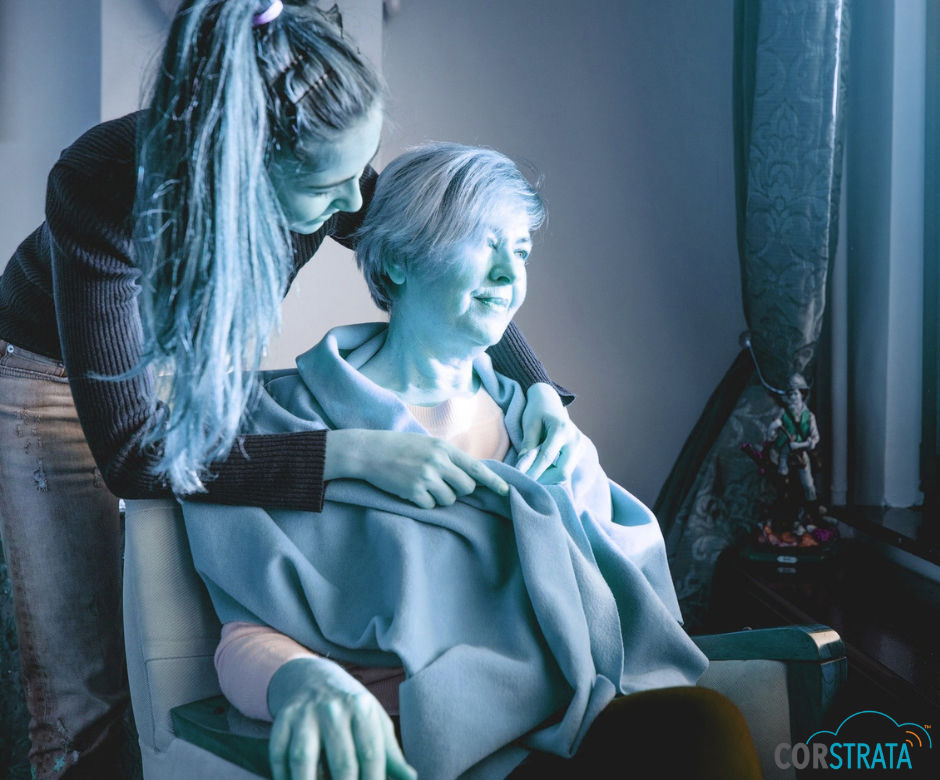The Critical Role of Wound Care Education in Hospice & Palliative Care
- katherinepiette
- Aug 20, 2024
- 4 min read
Alicia Jenkins, BS, RN, CWCN

Corstrata recently collaborated with the American Academy of Hospice and Palliative Medicine to develop ACCME-accredited education content, “Palliative Wound Care: Principles and Practice,” to support educational content included in the ABIM Hospice and Palliative Medicine Examination Blueprint.
Wound care is a vital component of hospice and palliative care, as it directly impacts patient comfort, quality of life, and overall health outcomes. For hospice providers, understanding the complexities of wound care is crucial to delivering compassionate and effective care to patients in their final stages of life. This blog post explores the importance of wound care education for hospice providers, highlighting the differences between curative and palliative approaches, common wound types, and the critical role of interprofessional collaboration.
Understanding the Differences: Curative vs. Palliative Wound Care
Wound care in the hospice setting often requires a distinct approach compared to curative wound care. While curative care aims to heal wounds completely, palliative wound care focuses on managing symptoms, promoting comfort, and enhancing the quality of life. This shift in focus is essential for patients with serious, life-limiting illnesses, where aggressive treatment may not align with their goals or be feasible due to their condition. Palliative wound care may result in wound healing but prioritizes stabilizing the wound, preventing new wounds, eliminating odor, controlling pain, managing exudate, and preventing infection. The ultimate goal is to create a healing environment that minimizes discomfort and complications, recognizing that complete healing may not be possible.
Common Wound Types in Hospice and Palliative Care
Hospice patients often present with various types of wounds, each requiring specialized management:
Pressure Injuries: These occur due to prolonged pressure on the skin, particularly over bony prominences. Effective management includes regular repositioning, pressure-relieving support surfaces, and careful monitoring to prevent complications.
Moisture-Associated Skin Damage (MASD): Prolonged exposure to moisture from urine, stool, sweat, or wound exudate can lead to skin erosion and inflammation. Preventive measures include using moisture-wicking fabrics and barrier creams and maintaining skin hygiene.
Malignant Wounds: These result from cancerous tumors invading the skin or underlying tissues. Management focuses on symptom control, such as odor and exudate management, and preventing infection.
Chronic Wounds: Conditions like diabetes and peripheral vascular disease can lead to chronic wounds such as diabetic foot ulcers, arterial ulcers, and venous stasis ulcers. Palliative care aims to manage symptoms and stabilize the wound without aggressive interventions.
Skin Changes at Life’s End (SCALE): As patients approach the end of life, they may experience skin pallor, mottling, and other changes due to decreased perfusion. Management focuses on comfort measures and skin protection. Patient and caregiver education is essential in managing expectations and reducing anxiety.
Interprofessional Collaboration: A Key to Effective Wound Care
Effective wound care in the hospice setting requires a collaborative approach involving various healthcare professionals. Nurses, physicians, wound care specialists, social workers, and spiritual care providers must work together to address all aspects of the patient’s well-being. Interprofessional collaboration ensures comprehensive assessments, coordinated interventions, and seamless care delivery.
Assessment and Diagnosis: Accurate wound assessment is crucial for effective management. By classifying wounds based on their etiology, depth, and characteristics, healthcare providers can tailor treatment plans to the patient's specific needs.
Symptom Management: Pain, odor, and exudate management are central to palliative wound care. Using appropriate dressings, pain relief strategies, and infection control measures can significantly improve patient comfort.
Education and Training: Ongoing education and training for hospice providers are essential to stay updated on best practices in wound care. This includes understanding the latest wound care products, technologies, and evidence-based strategies to optimize patient outcomes.
The Role of Wound Care Specialists
Certified wound care specialists play a crucial role in the hospice setting. They bring specialized knowledge and skills to assess, manage, and treat complex wounds, ensuring optimal wound care practices and preventing complications. Their expertise is invaluable in developing individualized care plans that align with the patient's goals and enhance their quality of life. Additionally, as the patient progresses, their goals may change from curative to palliative, and their treatment plan should be revised accordingly.
Addressing Cultural Competency and Implicit Bias
Cultural and linguistic competency is essential in providing equitable wound care. Hospice providers must be aware of their implicit biases and understand their patients' cultural preferences and practices. This awareness helps build trust and fosters better communication, leading to more effective and respectful care. Recognizing and addressing patient preferences can enhance patient satisfaction and improve care outcomes.
Conclusion
Wound care education is critical for hospice providers to deliver high-quality, compassionate care to patients in their final stages of life. Understanding the nuances of palliative wound care, recognizing common wound types, and fostering interprofessional collaboration are essential components of effective wound management. By prioritizing education and addressing cultural competency, hospice providers can significantly improve patient comfort, dignity, and quality of life.
About Corstrata
Corstrata, a national leader in innovative wound and ostomy TeleNursing solutions, had the honor of developing the Palliative and Hospice wound educational modules for Hospice and Palliative Medicine ABIM certification exam preparation for the American Academy of Hospice and Palliative Medicine (AAHPM). AAHPM, a respected organization dedicated to advancing hospice and palliative care through professional education and certification, partnered with Corstrata to ensure healthcare professionals are well-equipped with the knowledge and skills needed to provide exceptional care for patients with serious illnesses who develop complex wounds. This collaboration underscores Corstrata's commitment to enhancing patient quality of life and supporting healthcare professionals in their vital roles.
For more information on advanced wound care strategies and to access comprehensive educational resources, visit Corstrata.


Comments